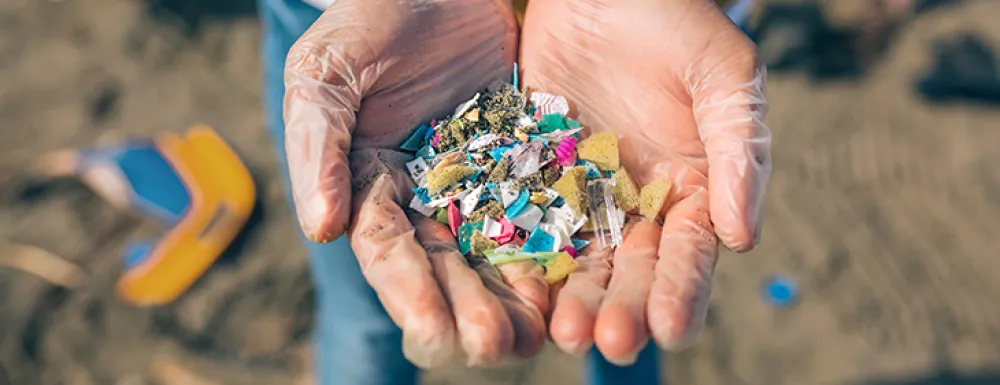
Clean Streets, Clean Seas
The City of Santa Barbara's Creeks Restoration and Water Quality Improvement Division (Creeks Division), in partnership with the University of Southern California (USC) Sea Grant Program, are conducting microplastic research thanks to a $1.26 million grant.
Microplastics are small plastic pieces or fibers smaller than 5mm in size (about the size of a pencil eraser). They are found on our streets, in our creeks and ocean, the water we drink, the food we eat, and the air we breathe. Microplastics can absorb and carry pollutants, leach harmful chemicals into water, and are often mistaken for food by wildlife. Microplastics often come from larger plastic products breaking down due to sun, wind, and wave exposure, breaking down into smaller and smaller pieces.
The project, “Clean Streets, Clean Seas: Innovating Public Works to Intercept Microplastics in Urban Runoff,” will provide the first measured and reported results on the impacts of street sweeping and trash capture devices on microplastic marine debris in stormwater runoff, which transports the bulk of microplastic pollution to the sea. Project fieldwork will take place in Santa Barbara as well as the San Francisco Bay and Los Angeles areas. The work will be carried out in collaboration with the City of Santa Barbara, the University of California Santa Barbara, the San Francisco Estuary Institute, the Southern California Coastal Water Research Project, the Moore Institute for Plastic Pollution Research, WSP USA, and Cascade Water Resources.
This project will determine how to remove microplastics from impervious urban surfaces to the greatest extent possible, as soon as possible, from as many acres as possible, to protect our streams, estuaries, and oceans from harmful pollution.
This grant is part of a $27 million funding effort by the National Oceanic and Atmospheric Administration (NOAA) to address the prevention and removal of debris in marine and Great Lakes environments throughout the country. This project is one of 29 competitively selected through two opportunities supported by the Bipartisan Infrastructure Law and leveraging funds from the Inflation Reduction Act: The Marine Debris Challenge Competition and The Marine Debris Community Action Coalitions.
“The Creeks Division’s research on decreasing the amount of microplastics reaching our creeks and ocean complements the City’s ongoing efforts to reduce the impacts of single-use plastics in Santa Barbara,” said Sustainability & Resilience Director Alelia Parenteau. “We look forward to this project contributing important data to help government agencies nationwide take meaningful action to prevent microplastic pollution.”
